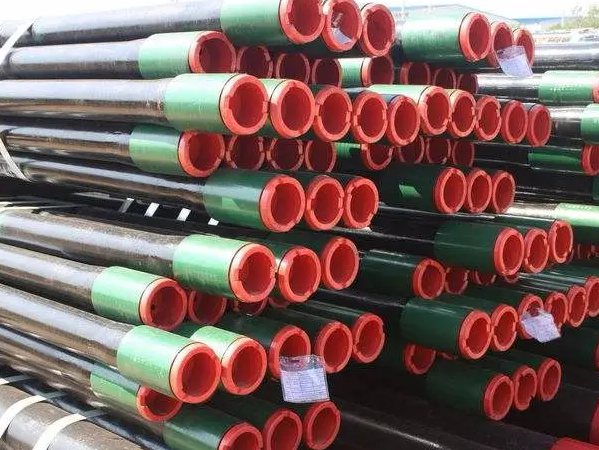
Steel Well Casing Pipe Sizes
1. Significance of steel well casing pipe sizes
Steel well casing sizes are determined by outside diameter (OD) and wall thickness and are fundamental considerations when constructing a well. Properly sized casing is critical to maintaining wellbore integrity, preventing formation collapse and promoting efficient well operations. The importance of steel well casing dimensions can be understood through its impact on load-carrying capacity, pressure control and resistance to environmental stresses.
(1) Carrying capacity
The outer diameter and wall thickness of the steel casing directly affect its load-bearing capacity. Larger casing sizes and thicker walls are able to withstand higher external pressures and support heavier vertical loads, making them suitable for deeper wells and challenging geological formations.
(2) Pressure containment
The steel well casing size is selected to ensure safe containment of fluids under varying pressure conditions. Proper sizing of casing is critical to preventing blowouts, fluid leaks, and migration of contaminants into the surrounding environment.
(3) Resistant to environmental pressure
Steel casing sizes are selected to withstand environmental stresses such as corrosion, wear and external forces. Choosing the right size ensures long-term durability and reliability of the well system under varying operating conditions.

2. Factors affecting the selection of steel well casing pipe size
Deeper wells and unstable geology require larger casing sizes to provide adequate support and prevent collapse. Different formation characteristics require careful evaluation to determine the most appropriate casing size for optimal well performance.
(2) Fluid characteristics and pressure levels
The type of fluid contained or extracted from the well and the expected pressure differential influence the choice of casing size. High-pressure environments or corrosive fluids may require thicker-walled casing to ensure an effective seal.
(3) Regulatory compliance
Regulatory standards and industry best practices dictate minimum casing size requirements based on the well's intended use, environmental considerations and public safety standards. Compliance with these regulations is necessary and affects the selection of casing size for a specific well project.
(4) Operation precautions
Planned completion and production techniques also influence casing size selection. For example, installing production tubing within casing may require larger casing sizes to achieve proper annulus flow and production optimization.
3. Clear examples of steel well casing pipe sizes under different well construction scenarios
Example 1: Oil and Gas Industry
In offshore drilling projects targeting deepwater reservoirs, the selection of steel well casing sizes is critical. Given the extreme depth and high-pressure conditions encountered in offshore drilling, larger casing sizes, such as 13 3/8-inch outside diameter and thicker walls, are often used to ensure structural integrity and pressure control. This example illustrates how casing sizes can be tailored to suit challenging subsurface conditions in offshore oil and gas exploration.
Example 2: Water well construction
In the context of the construction of municipal water supply wells, steel casing sizes are required to ensure a clean and reliable water source. For moderately deep wells serving local communities, a smaller casing size (e.g., 6-inch OD with standard wall thickness) may be sufficient to protect the wellbore and maintain water quality. This example demonstrates how to size casing to meet the specific depth and aquifer characteristics typical of water well construction projects.
Example 3: Geothermal Energy Extraction
In geothermal energy recovery projects for high-temperature reservoirs, the selection of steel well casing sizes is affected by the extreme conditions downhole. Use large-diameter casing, such as 9 5/8-inch OD casing, with wall thickness to withstand thermal stresses to facilitate installation of downhole heat exchangers and ensure the integrity of the geothermal well. This example highlights the customization of casing dimensions to address the unique challenges associated with geothermal energy extraction.
Conclusion:
Steel well casing pipe sizing is critical to ensuring the success and sustainability of well construction across different industries. By carefully evaluating factors such as well depth, formation characteristics, regulatory compliance and operational considerations, engineers and operators can select the most appropriate casing size to meet the specific requirements of each well project. Clear examples provided highlight the adaptability of steel well casing sizes, demonstrating their critical role in solving the various challenges presented by different well construction options. Through informed decision-making and accurate sizing, the industry can continue to improve the safety, efficiency and longevity of well systems.
Read more: Steel Casing Pipe VS. Tubing
- 【Prev】 : ERW Structural Pipe
- 【Next】 : Acceptance Standards for Welded Pipes


